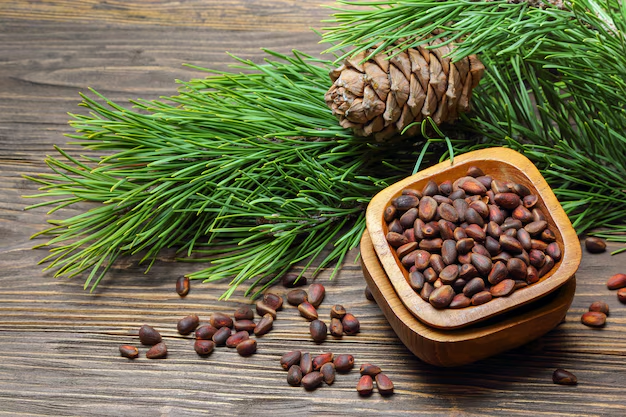sLaricio pine (Pinus nigra), also known as Austrian pine, is a robust and versatile tree species admired for its resilience, aesthetic appeal, and numerous practical applications. Whether you’re a horticulturist, landscaper, or homeowner looking to add a touch of natural beauty to your property, understanding the characteristics, benefits, and care requirements of the laricio pine is essential. In this comprehensive guide, we’ll explore everything there is to know about laricio pine, from its features and environmental impact to its uses and maintenance.
What Is Laricio Pine?
Laricio pine (Pinus nigra) is a species of pine tree native to Europe, particularl the Mediterranean region and parts of Central and Eastern Europe. It thrives in a variety of environments, from mountainous landscapes to more temperate lowlands, making it a popular choice for both forestry and landscaping projects.
The tree’s resilience and adaptability to different soil types and climate conditions are some of the main reasons it has become a favorite for many gardeners and forestry professionals. Laricio pine is characterized by its long, dark green needles, which grow in pairs, as well as its distinctive bark that matures from smooth to rough as the tree ages.
In its natural habitat, laricio pine can grow up to 50 meters (164 feet) tall, although most cultivated specimens are smaller. Its straight, tall trunk and conical crown make it an attractive addition to parks and gardens, while its durable wood is highly prized for construction purposes.
Key Features of Laricio Pine
Before we dive into the benefits and uses of laricio pine, let’s examine its unique characteristics:
- Needles: Laricio pine has long, slender needles, typically around 10–20 cm (4–8 inches) in length. These needles grow in pairs and maintain their deep green color year-round, providing a consistent visual appeal in the landscape.
- Bark: The bark of the laricio pine is typically dark brown or grayish-brown with a rough texture. As the tree matures, the bark becomes even more textured and fissured, adding to its distinctive appearance.
- Cones: The cones of the laricio pine are elongated, cylindrical, and woody. They measure between 5–12 cm (2–5 inches) long, with a pointed shape that sets them apart from other pine species. The cones take several months to mature and release seeds, which are dispersed by wind.
- Growth: Laricio pine is a slow-to-moderate grower. In optimal conditions, it can reach a height of 30–40 meters (98–131 feet), with a spread of around 8–12 meters (26–39 feet). However, its growth rate depends on factors such as soil quality, water availability, and climate.
The Benefits of Laricio Pine
Laricio pine is highly valued for several reasons, including its environmental and economic benefits. Here are a few of the most prominent advantages of this versatile tree species:
-
Environmental Benefits
- Erosion Control: The deep, extensive root system of laricio pine makes it an excellent choice for preventing soil erosion, particularly on slopes and hillsides. Its roots help stabilize the soil, reducing the risk of landslides and other soil degradation issues.
- Carbon Sequestration: Like all trees, laricio pine absorbs carbon dioxide from the atmosphere and stores it in its biomass. This carbon sequestration helps mitigate climate change by reducing greenhouse gas emissions.
- Wildlife Habitat: The dense foliage of the laricio pine provides shelter for a wide range of wildlife, including birds, small mammals, and insects. The tree’s cones also serve as a food source for various creatures, further enhancing its ecological value.
-
Landscaping Benefits
- Aesthetic Appeal: With its towering height, conical shape, and dark green needles, the laricio pine can serve as a focal point in any landscape design. Whether planted as a solitary specimen or in a group, this tree adds a touch of elegance and sophistication to gardens and parks.
- Shade and Privacy: Laricio pine trees are well-suited for providing shade and privacy in larger gardens or properties. Their thick foliage forms a dense canopy that helps reduce sunlight exposure, making them ideal for creating shaded areas or windbreaks.
- Windbreaks: Thanks to their strong branches and dense needles, laricio pines are highly effective in serving as windbreaks. This feature is particularly beneficial in regions with harsh winter winds or areas prone to dust storms.
-
Economic and Practical Uses
- Timber Production: The wood of laricio pine is highly valued for its strength, durability, and versatility. It is commonly used in construction, furniture-making, and the production of wooden beams, flooring, and paneling. Laricio pine is also a source of high-quality paper pulp.
- Resilience to Pests and Diseases: Compared to many other tree species, laricio pine is relatively resistant to pests and diseases, making it a low-maintenance choice for both forestry and landscaping. While it may be susceptible to some fungal infections, it generally requires fewer interventions than more delicate trees.
- Afforestation and Reforestation: Laricio pine is frequently used in afforestation and reforestation projects, particularly in areas where soil improvement or erosion control is needed. Its ability to grow in a variety of soil types and climates makes it a reliable choice for large-scale ecological restoration efforts.
How to Grow and Care for Laricio Pine
Growing and caring for laricio pine requires some consideration of the tree’s environmental preferences and maintenance needs. Follow these tips to ensure your laricio pine thrives in your landscape.
-
Ideal Planting Location
Laricio pines grows best in well-drained soils, preferably slightly acidic to neutral, and it can tolerate both dry and moderately wet conditions. It is a sun-loving tree that thrives in full sun but can also handle partial shade. The tree is highly adaptable to different climates, although it does prefer regions with mild winters and moderate summers.
-
Watering and Soil Requirements
While the laricio pines is drought-tolerant once established, it will require regular watering during its first few years of growth. Make sure the soil is consistently moist, but avoid waterlogging, which can lead to root rot. Once the tree is mature, it is generally self-sufficient and can survive in dry conditions.
-
Pruning and Maintenance
Pruning is essential for maintaining the health and appearance of laricio pines. Young trees should be pruned to establish a strong central leader and remove any lateral branches that could hinder vertical growth. As the tree matures, you can trim back dead or damaged branches to maintain its shape. Avoid heavy pruning, as it can disrupt the tree’s natural growth pattern.
-
Pest and Disease Control
While laricio pines is relatively resistant to pests and diseases, it can still be susceptible to certain fungal infections, such as pines wilt disease and root rot. Regular inspections for signs of disease, such as yellowing needles or resin-producing lesions, can help catch issues early. If necessary, consult a professional arborist for treatment options.
Comparison Chart: Laricio Pine vs. Other Popular Pine Species
To better understand where laricio pines stands in comparison to other common pines species, refer to the following chart, which highlights key characteristics of various pines trees.
| Characteristic | Laricio Pine (Pinus Nigra) | Scots Pine (Pinus Sylvestris) | Eastern White Pine (Pinus Strobus) |
| Native Range | Europe, Mediterranean | Europe, Asia | North America |
| Max Height | 50 m (164 ft) | 35 m (115 ft) | 60 m (197 ft) |
| Needle Length | 10–20 cm (4–8 inches) | 5–10 cm (2–4 inches) | 5–10 cm (2–4 inches) |
| Growth Rate | Moderate | Fast | Fast |
| Soil Tolerance | Wide range, prefers well-drained | Wide range, prefers acidic soils | Prefers moist, sandy soils |
| Pest Resistance | High | Moderate | Low |
| Primary Use | Timber, landscaping, erosion control | Timber, pulpwood | Timber, furniture |
Conclusion
Laricio pines is a versatile and robust tree species that offers a wide range of environmental, aesthetic, and economic benefits. Its adaptability to different climates and soil conditions, combined with its resilience against pests and diseases, makes it an excellent choice for landscaping, forestry, and reforestation projects. Whether you’re looking to enhance your garden’s aesthetic, create a windbreak, or utilize the tree for timber production, laricio pines proves to be a valuable and reliable option.
By understanding the tree’s characteristics and care requirements, you can successfully incorporate laricio pines into your landscape or forestry project, ensuring it thrives for generations to come.

